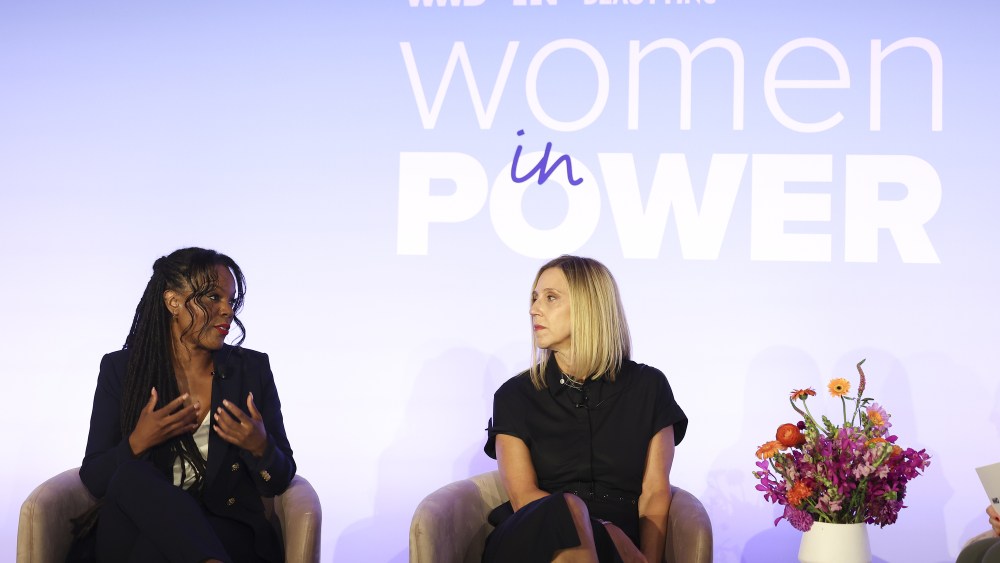The workplace is not immune to the outside world, where workers face a U.S. presidential election, an attempted assassination, the erosion of access to women’s health care, climate change and ongoing wars.
“It’s a very complicated world right now and people are bringing things with them into the workplace. Many workers, who don’t have a robust community or live apart from their families, come to work to work, but also looking for an outlet. Their colleagues, whom they may spend eight to 10 hours a day with, want to talk. Some of these topics are really difficult to talk about and can cause tension in the workplace,” Mason said in conversation with LVMH North America chief human resources officer Gena Smith, and Fairchild Media Group executive managing editor Allison Collins. “It is a really hard time especially in this moment.”
Acknowledging how the past four years have been “extremely intense,” due to war, a recession and economic challenges, Smith said, “All of have been impacted. I don’t think that anybody is going back to the way we were pre-COVID.”
After the post-pandemic boom that hurled people back into normalcy and saddled employees with an unprecedented velocity of work, there is now a “very high level of burnout with people feeling very tired and having not had much opportunity to recharge. Companies like ours, and all of ours, are demanding very high expectations. Employees are very resilient and are willing to give back and contribute. But we as an organization have to be very empathetic to what everybody has experienced.”
Mental health awareness is one the silver linings from the past few years, according to Smith.
Mason suggested that executives ready themselves to have “courageous conversations” that center around listening and understanding. Setting up opportunities in companies that will allow employees to get to know one another on a very human level so they can connect and improve relations can also help, she said.
Cultivating environments where diverse points oof view can coexist is integral from Smith’s perspective. “If you don’t have the right culture, there is no training that you can give to your leaders. You have to create the kind of culture that creates a safe opportunity and space that allows people to share their points of view in a constructive and respectful way,” she said.
Once such cultures are in place, how people are “held accountable for aligning and driving those values” is also key, Smith added.
Before speaking internally or externally on current events, “make sure that what you’re speaking about…[is]…aligned inside. If it’s not, it’s going to be called out by all of your employees. If there’s a topic that is not something that you have ever addressed as an organization internally or externally, you should question whether that’s something that [you] should be weighing in on.”
For example, in 2022 when Roe v. Wade was overturned, rolling back abortion rights, “our number-one priority was making sure that our employees have access to safe health care,” Smith said. “That was something that we had always prioritized through all of our women’s initiatives and health care programs…it wasn’t a point of view one way or the other. It was really [a matter of] this is what we’re doing to make sure, if you have a need, that need will be supported by the group.”
Looking ahead to the pre-presidential election conversations, Mason suggested being “an open listener to what people are thinking about and feeling about the debate, the election or the conversation. That’s different than offering a point of view or a winner. Just being very mindful and not needing to fill in the gaps is going to be really important in the coming months with the election and beyond.”

